 Namibia : Safety by City
Namibia : Safety by City
Namibia is where space, silence, and surreal beauty collide—a country that feels ancient, raw, and strangely untouched.
Located in southern Africa, just northwest of South Africa, and bordered by Angola, Zambia, and Botswana, Namibia offers travelers something few places do: true remoteness without sacrificing safety or comfort.
A complex history shaped its modern identity.
Once colonized by Germany in the late 1800s, it became the site of one of the first genocides of the 20th century against the Herero and Nama peoples.
After World War I, South Africa took control, enforcing apartheid-style rule until Namibia gained independence in 1990.
The country is now a stable democracy with a small population and strong environmental protections, making it one of Africa’s success stories in governance and conservation.
Travelers are drawn here not just for what they see but for what they feel.
Namibia isn’t loud or showy.
It invites slow travel—driving for hours without passing another car, watching the stars in total silence, or standing alone on a dune that feels like the edge of the world.
The wildlife is wild, not fenced-in.
The towns are small but welcoming.
The landscapes are otherworldly but accessible.
At the same time, the risks are scattered from the urban cores to the wild open spaces.
Let’s see how you can plan to have the safest and most exquisite experience in Namibia.
Warnings & Dangers in Namibia

OVERALL RISK: MEDIUM
Namibia is a medium risk, but those who exercise excellent safety standards and stay healthy will be much better off. This article should help you avoid the most common risks.

TRANSPORT & TAXIS RISK: MEDIUM
Getting around comes with medium risk. Public minibuses are unreliable and often unsafe, and street taxis may not be licensed. For safety, stick to pre-booked transfers or taxis arranged by hotels. Roads can be treacherous, especially gravel routes, and at night, so self-driving requires serious caution.

PICKPOCKETS RISK: MEDIUM
The risk of pickpocketing is medium, mainly in Windhoek, Swakopmund, and busy markets. Theft from vehicles, especially at stoplights or in parking lots, is more common than pickpocketing from your person. Keep windows up, doors locked, and bags hidden when driving or parked. There's also the risk of wild animals scavenging through your bags in rural areas if you're camping.

NATURAL DISASTERS RISK: LOW
Namibia faces a low risk of natural disasters. Flash floods can occur during the rainy season, mostly in the north, and droughts are common, but they don’t usually affect tourists directly. Earthquakes and severe storms are rare, but desert temperatures can become dangerously extreme. Most weather-related injuries here are due to people being unprepared for the conditions.

MUGGING RISK: MEDIUM
In Windhoek and some smaller towns, mugging is a medium risk, especially at night or in isolated areas. Avoid walking alone after dark, especially around downtown, Katutura, or informal settlements. Most incidents are opportunistic rather than violent, but still unsettling if you’re unprepared.

TERRORISM RISK: LOW
Namibia has a low terrorism risk with no recent history of attacks targeting tourists. It remains politically stable, with no active insurgent groups or cross-border conflicts affecting travelers. As always, report suspicious activity just to be safe.

SCAMS RISK: MEDIUM
The scam risk is medium, mostly involving petty cons like overpriced curios, fake travel guides, or "helpers" at ATMs. Bootleg diamond offers are a red flag—don’t engage. Use official vendors, and avoid engaging with overly persistent strangers in tourist-heavy areas. Never let your credit card out of sight, even when making a purchase.

WOMEN TRAVELERS RISK: MEDIUM
For solo women, Namibia is a moderate-risk destination. Most areas are safe with common-sense precautions—dress modestly in rural areas, avoid walking alone at night, and be aware of unwanted attention. Local attitudes are generally respectful, especially in hospitality settings. Ideally, you'll travel with a tour group.

TAP WATER RISK: LOW
In Windhoek and most cities, tap water is considered low-risk and safe to drink. That said, water quality may vary in rural or remote areas, so bottled or filtered water is a safer bet outside major towns. Bring purification tablets if heading off-grid.
Safest Places to Visit in Namibia
Namibia’s official tourism website is visitnamibia.com.na.
For the most up-to-date travel requirements, visit the Plan Your Trip section.
You can also view different travel planning guides, whether you’re a photographer, planning to drive yourself around, or looking for elevated adventures.
Namibia isn’t really a checklist destination—it’s more like a choose-your-own-adventure book where every page looks nothing like the last.
Windhoek is where most people start.
It’s small, manageable, and has enough culture, history, and food to keep you grounded before heading out into the wild.
Southwest of the capital, the red dunes of Sossusvlei are unreal—massive, cinematic, and worth the early wake-up call to hike them at sunrise.
Deadvlei, with its ghostly camelthorn trees on cracked clay, feels like another planet.
On the coast, Swakopmund is a strange and cool mix of German colonial architecture and desert sports.
You can sandboard, skydive, or just sit with a beer and watch the Atlantic crash into the dunes.
Head north, and it shifts again.
Etosha National Park is your classic safari spot—except here, you can self-drive and watch elephants, lions, and rhinos from your car; No guide needed.
In the lush Caprivi Strip, the landscape flips again—suddenly there’s water, hippos, crocs, and villages built along slow-moving rivers.
There’s also the Skeleton Coast, Twyfelfontein’s ancient rock carvings, and star-filled skies that make you feel microscopic.
It’s not polished, but that’s the point. Namibia is wild, strange, and endlessly rewarding if you give it time.
Places to Avoid in Namibia
While no parts of Namibia are listed as “Do Not Travel” by government agencies like the U.S. State Department, there are some places where crime and other safety concerns are elevated.
The Canadian government advises caution due to petty crime, especially in the Windhoek city center and around transport hubs, ATMs, and hotels.
Common issues include pickpocketing, bag snatching, and theft from cars, especially when they are parked or stopped at lights.
The U.S. also notes that roadside rest stops outside Windhoek have been the target of thieves and robbers.
Canada also recommends limiting your time or avoiding the Namibia-Angola border.
That includes the Kavango region and the western half of the Zambezi region.
The risk of landmines is also present in the village of Katwitwi and the town of Kongola.
Also, due to the risk of credit card and identity theft, never let a vendor take your credit card out of sight.
Safety Tips for Traveling to Namibia
- Namibian law enforcement is handled by the Namibian Police Force (NAMPOL). Tourist police are stationed in Windhoek and Swakopmund. In an emergency, dial 10111 for police. Save this in your phone—cell service can drop fast outside cities, so know your exact location when calling.
- Namibia doesn’t have a formal emergency alert system like the U.S. or EU. Local radio (NBC) or hotel staff are your best sources during crises. Some travelers opt into SMS alerts through travel insurance providers or use apps like Namola (designed for southern Africa) for GPS-linked help.
- Namibia’s roads look fine until they aren’t. Paved highways are solid, but most routes to lodges, dunes, and parks are gravel or sand. Washboarding, potholes, and sharp rocks are common. Flat tires and rollovers are frequent. Drive slow, carry a spare, and never travel at night.
- Routine police checkpoints are common—don’t panic. Stop completely, stay in the car unless told otherwise, be polite, and have your driver’s license, passport, and rental documents handy. Don’t bring drones without a permit, and avoid joking around—they take security seriously, especially near borders.
- Don’t buy diamonds or precious stones from random guys on the street—it’s often a scam and sometimes illegal. Namibia has a tightly controlled diamond industry, and carrying unlicensed stones can get you arrested. Buy only from certified dealers, and keep receipts with you if you’re questioned.
- Wild animals aren’t just a safari thrill—they’re also opportunists. Baboons will unzip tents, snatch bags, and rip open windows if they smell food. Never leave snacks or trash unattended, even at picnic sites. Lock car doors and close windows in known wildlife areas like Cape Cross or Waterberg.
- Malaria is a risk in the north (Etosha, Zambezi, Kavango) especially from November to June. Get anti-malarial meds and pack insect repellent with DEET. Hepatitis A, typhoid, and rabies vaccines are recommended.
- Parts of Namibia sit higher than you’d expect. Windhoek is at 5,600 feet, and Sossusvlei tops 3,000 feet. The highest point in Namibia that a tourist might climb is Brandberg Mountain, with its summit—Königstein Peak—reaching 8,442 feet (2,573 meters) above sea level. Most travelers are fine, but those sensitive to elevation may feel lightheaded or short of breath. Hydrate well, avoid heavy drinking, and pace yourself if hiking in central or southern regions.
- Namibia has a tourism infrastructure that can’t always handle spontaneous plans. Some regions have just one or two places to stay, and they fill up quickly—especially near Etosha or the Skeleton Coast. Don’t expect to just “find something.” Book at least a few weeks out, even in low season.
- Namibia can flip from 100°F midday to 40°F overnight, especially in the desert. Don’t pack like you’re just going to the beach—bring layers, a warm jacket, and a hat. Rainstorms are short but intense during the wet season and can flood roads quickly. Always check the forecast before heading out.
So... How Safe Is Namibia Really?
Namibia isn’t the most dangerous country in Africa, but it’s not the safest, either.
Most governments offer their citizens an advisory rating scale between one (the lowest) and four (the highest).
Here’s how Namibia ranks.
- United States: Level 2 — “Exercise increased caution in Namibia due to crime and health risks.”
- Canada: Level 2 — “Exercise a high degree of caution in Namibia due to the high level of crime.”
- Australia: Level 1 — “Exercise Normal Safety Precautions”
While we discussed the places to avoid or use extra caution earlier in this article, you can never let your guard down against petty or violent thefts.
Driving yourself can put you at additional risk of car break-ins due to high crime rates.
Then there are the health risks, wildlife concerns, and scattered scams.
You just can’t let your guard down anywhere in Namibia.
It’s also worth punctuating that you don’t want to get injured or sick there due to a lack of health treatment options.
Hopefully, we’ve given you a great head start to prepare for the safest experience in Namibia.
How Does Namibia Compare?
| Country | Safety Index |
|---|---|
| Namibia | 71 |
| Djibouti | 38 |
| Croatia | 83 |
| Mexico | 65 |
| France | 64 |
| Puerto Rico | 34 |
| Somalia | 16 |
| United Kingdom | 77 |
| Peru | 50 |
Useful Information

Visas
As of April 1, 2025, Namibia now requires visas for tourists from 30+ countries, including the U.S., UK, Canada, Germany, and Australia. You can apply online (https://eservices.mhaiss.gov.na/visaonarrival). Your passport must be valid for at least six months past your entry date and have blank pages. Overstaying your visa can lead to fines or trouble when exiting.

Currency
Namibia uses the Namibian Dollar (NAD), which is pegged to the South African Rand (ZAR), and both are accepted. Credit cards work in most urban areas, but cash is better in rural zones. ATMs are widely available, but carry backup cash if you're heading into remote regions.

Weather
Namibia is mostly dry and sunny year-round. Summers (October to April) can get hot, especially in the desert, while winter nights (May to September) are surprisingly cold. The rainy season is typically January to March, but usually light. Always pack layers and sun protection, no matter the season.

Airports
Hosea Kutako International Airport (WDH) near Windhoek is the main gateway into Namibia. It's modern, small, and easy to navigate. Domestic flights run from smaller hubs like Walvis Bay and Ondangwa. Flights into Namibia often connect via Johannesburg, Cape Town, or Doha.

Travel Insurance
Travel insurance is strongly recommended. It should cover medical evacuation, theft, trip delays, and vehicle-related accidents—especially if you’re self-driving. Some safari lodges and remote areas may require proof of coverage, so double-check your policy before you go.
Namibia Weather Averages (Temperatures)
Average High/Low Temperature
| Temperature / Month | Jan | Feb | Mar | Apr | May | Jun | Jul | Aug | Sep | Oct | Nov | Dec |
|---|---|---|---|---|---|---|---|---|---|---|---|---|
| High °C |
30 | 29 | 28 | 26 | 24 | 22 | 22 | 25 | 28 | 30 | 31 | 31 |
| Low °C |
18 | 18 | 17 | 14 | 10 | 7 | 6 | 9 | 13 | 16 | 18 | 19 |
| High °F |
86 | 84 | 82 | 79 | 75 | 72 | 72 | 77 | 82 | 86 | 88 | 88 |
| Low °F |
64 | 64 | 63 | 57 | 50 | 45 | 43 | 48 | 55 | 61 | 64 | 66 |
Namibia - Safety by City
| City | Safety Index |
|---|---|
| Windhoek | 65 |
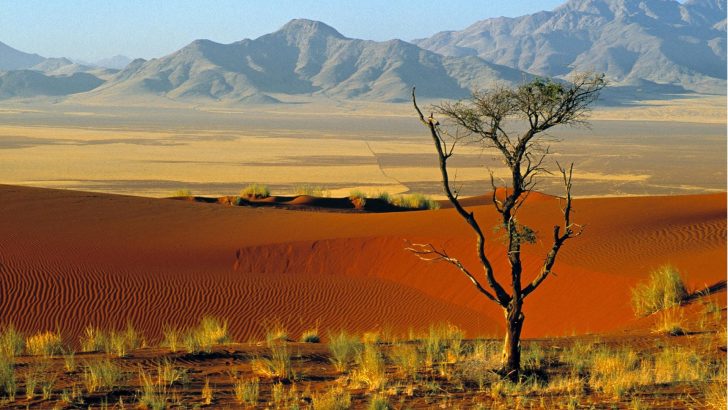
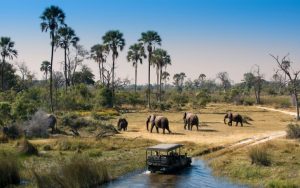

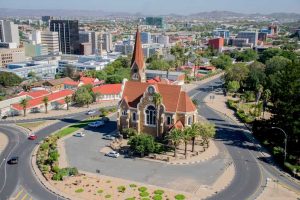
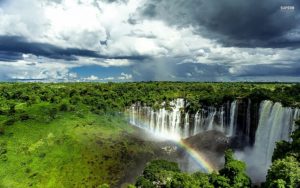
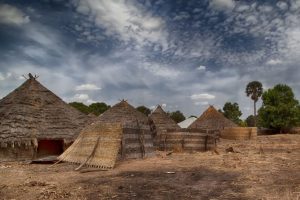
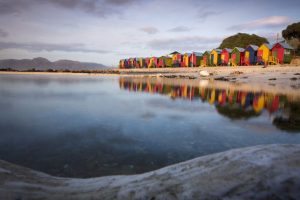
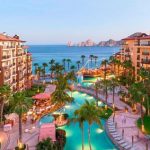
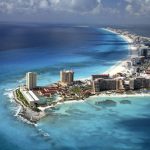
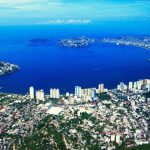
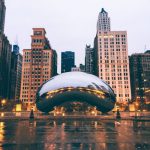
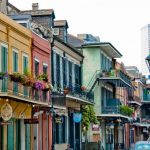
So Namibia is a safe place for tourists but you are likely to be pick pocketed, scammed and have your money stolen at an ATM?
That sounds really safe!
Tom – these same incidents happen all over America.
I moved to the US from SA. In the 40 years I’ve been here, I’ve never seen a crime or been a victim. I live in a medium sized city and never lock my doors or car. My windows are open from Spring to Autumn. Perhaps in large cities, but the rest isn’t bad.
Eh. I’ve lived in the US my entire life, 36 years old. I’ve had a scooter stolen (it was locked – they cut the lock) in a small Kentucky town, had someone break in on a meth rampage in a small Kentucky town, I have been pickpocketed twice in Chicago, IL, and have been mugged in Tennessee, carjacked in Oakland, CA, and watched a guy hold a gun to another guys head as a gang initiation while the dude broke into the car (watched it from my window) in Washington state. Also had a friend I was traveling with that was robbed in New Orleans, LA at knifepoint. Yeah, crime exists here. Even in small town Kentucky (where I am again now, because it’s where I grew up and I LOVE it), people who live around too many people lock their porch furniture up. If you’re living in rural/suburban areas: sure, it’s pretty safe in the US, but US cities are definitely their own ballgame. I love living in the US, but to act like we don’t have plenty of theft and violent crime is laughable – you only need turn on the nightly local news or actually get out on a regular basis in city centers.
Brother , i planning to move Namibia ..I got a job in namibia mining company so what about your suggestions
A lot of driving
A lot of driving around occurred when I visited there. It might help to be travelling in a group. I don’t suggest a woman go on a tour on her own there. While nothing bad happened when we were there, we didn’t see a lot of presence of police officials that gave you peace of mind knowing who you can run and report to if things do go wrong. Also, you might want to have an adapter that fits their plug, because it definitely isn’t the same one they use in the US.
Namibia is a safe holiday destination, period.
I have been living here for 59 years and can speak of safety in Namibia.
As in all countries in the world, be aware, stuff happens everywhere, at least here violence is not the norm as in many other countries I have traveled to, amongst them the USA.
If Namibia is unsafe, then a country like the US should have red flags all over it!
What a two-faced report on Namibia’s safety, truly shocking.
Go to Namibia
Namibia being safe
Best Country
I’ve been to Namibia 3 times it’s safe.Very hypocritical comments from Americans .This a beautiful country with diverse ecosystem beach,deserts ,savannas.Ignore all the bad comments and see it for yourself.
Namibia is Safe
I have been to Namibia 3 times it is safe and peaceful. It has less population.
Less people less problems
Very Safe